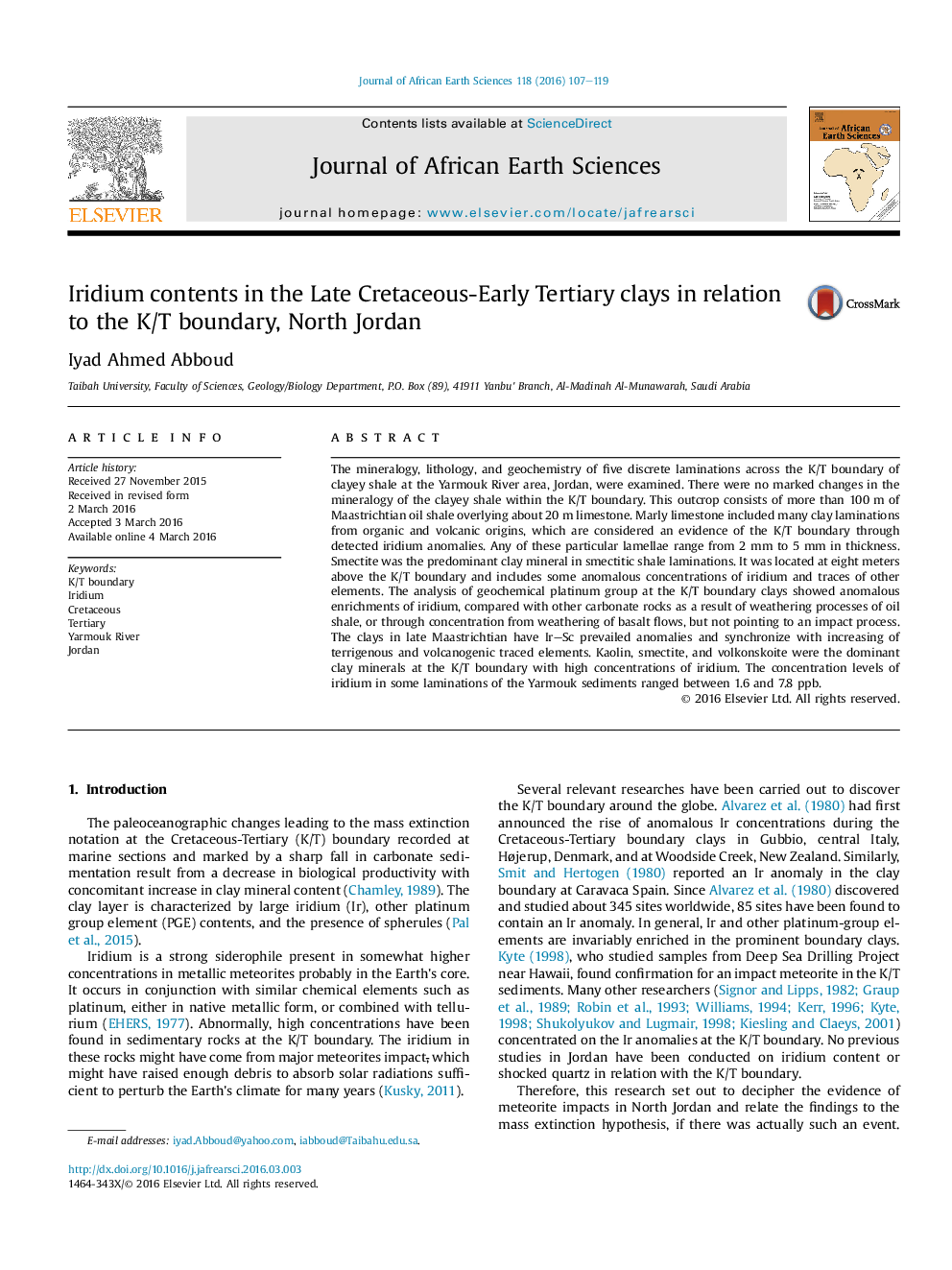| Article ID | Journal | Published Year | Pages | File Type |
|---|---|---|---|---|
| 4728429 | Journal of African Earth Sciences | 2016 | 13 Pages |
•To analyze clayey samples from the Cretaceous and Tertiary sediments.•To investigate the clay minerals in Al-Yarmouk River outcrops.•To find out whether evidence for impact event can be detected in the K/T sediments.•To look for other evidence such as elevates Ir concentrations.
The mineralogy, lithology, and geochemistry of five discrete laminations across the K/T boundary of clayey shale at the Yarmouk River area, Jordan, were examined. There were no marked changes in the mineralogy of the clayey shale within the K/T boundary. This outcrop consists of more than 100 m of Maastrichtian oil shale overlying about 20 m limestone. Marly limestone included many clay laminations from organic and volcanic origins, which are considered an evidence of the K/T boundary through detected iridium anomalies. Any of these particular lamellae range from 2 mm to 5 mm in thickness. Smectite was the predominant clay mineral in smectitic shale laminations. It was located at eight meters above the K/T boundary and includes some anomalous concentrations of iridium and traces of other elements. The analysis of geochemical platinum group at the K/T boundary clays showed anomalous enrichments of iridium, compared with other carbonate rocks as a result of weathering processes of oil shale, or through concentration from weathering of basalt flows, but not pointing to an impact process. The clays in late Maastrichtian have Ir–Sc prevailed anomalies and synchronize with increasing of terrigenous and volcanogenic traced elements. Kaolin, smectite, and volkonskoite were the dominant clay minerals at the K/T boundary with high concentrations of iridium. The concentration levels of iridium in some laminations of the Yarmouk sediments ranged between 1.6 and 7.8 ppb.
